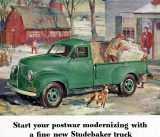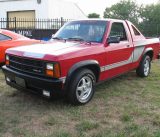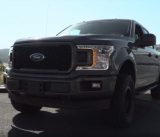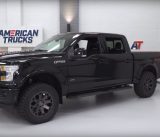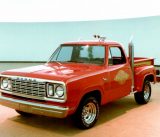
Source: Wikimedia Commons
For decades, the Ford F-Series has been the best-selling truck in America. In certain years—for instance, in 1982—the F-Series even topped the charts as the most popular vehicle in the country. For a car that’s been around for nearly 70 years and counting, it’s made more than an impression on the truck industry in the United States. In fact, no one can deny that the F-Series—including the technologically advanced model the F-Series has become—has had a hand in shaping this country.
The F-Series traces its origins to 1948 when Ford wanted to put a modern and reliable post-war truck on the market. This model was Ford’s first-ever break from the car chassis and featured a dedicated truck platform designed to handle rougher terrain. The models were put together at 16 factories across the country, and the first generation was produced for the next four years, until 1952.
The Design
The F-Series was what you would call radical for its day. It featured a rounded exterior that was a break from the streamlined look that had dominated trucks popular in the 1930s. Its bold grille said that it meant business, and its luxe interior and wide cab, which featured numerous creature comforts that had been previously unheard of in pickup trucks, became known as “The Million Dollar Cab.”

Source: Wikimedia Commons
The F-Series was available in four body styles, including: the panel truck, the pickup truck, the school bus chassis, and the cab-over-engine (COE) chassis. The F1, F2, and F3 models, which were offered in three different body styles, were the preferred choices. Most buyers opted for the F1 with a 6.5-foot pickup bed. Also popular were the F2 and F3 with 8-foot pickup beds.
Under the hood, F-Series trucks were powered by a flathead six engine that displaced 226 cubic inches (3.7 liters) and produced 180 pound-feet of torque and 95 horsepower—an upgrade on Ford’s previous flathead six which could only generate 90 horsepower. Ford also offered a flathead V8 in some models.
This first generation of Ford F-Series was on the market until 1952, when the naming scheme changed. The F1 became the F100, the F2 and F3 were rolled into a single package, the F250, and the F4 became the F350. The commercial F-Series models became the F500 to F900, while the COE chassis later became the C-Series of Ford trucks.
The Impact

Source: Flickr
Ford executives knew from the moment they started designing the F-Series that the line would be crucial to the company’s long-term goals. They achieved that by expanding the trucks they had on offer, using a powerful V8 engine in their heavier-duty models, and implementing a simple naming system that made it easy to identify trucks based on their gross vehicle weight ratings.
Ford’s ultimate goal was to overtake its arch-enemies, both Chevrolet and International. Chevrolet had previously proved to be an industry leader in the light- and medium-duty arena, while International dominated the medium- to heavy-duty range. Ford’s F1 through F6 models were aimed at Chevy, while the newly added F7 and F8 models were designed to compete with International. The surprising thing was, Ford was hardly innovative in its approach. The company simply covered all its bases, and it got them further—perhaps further than they could have even hoped—in the end.

